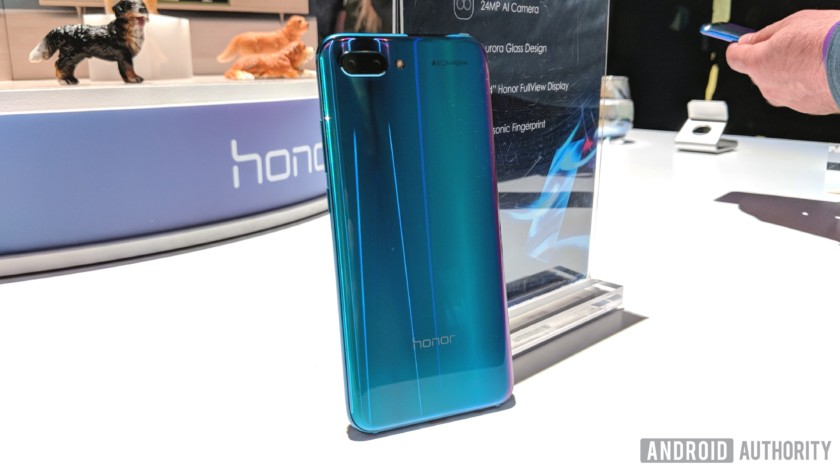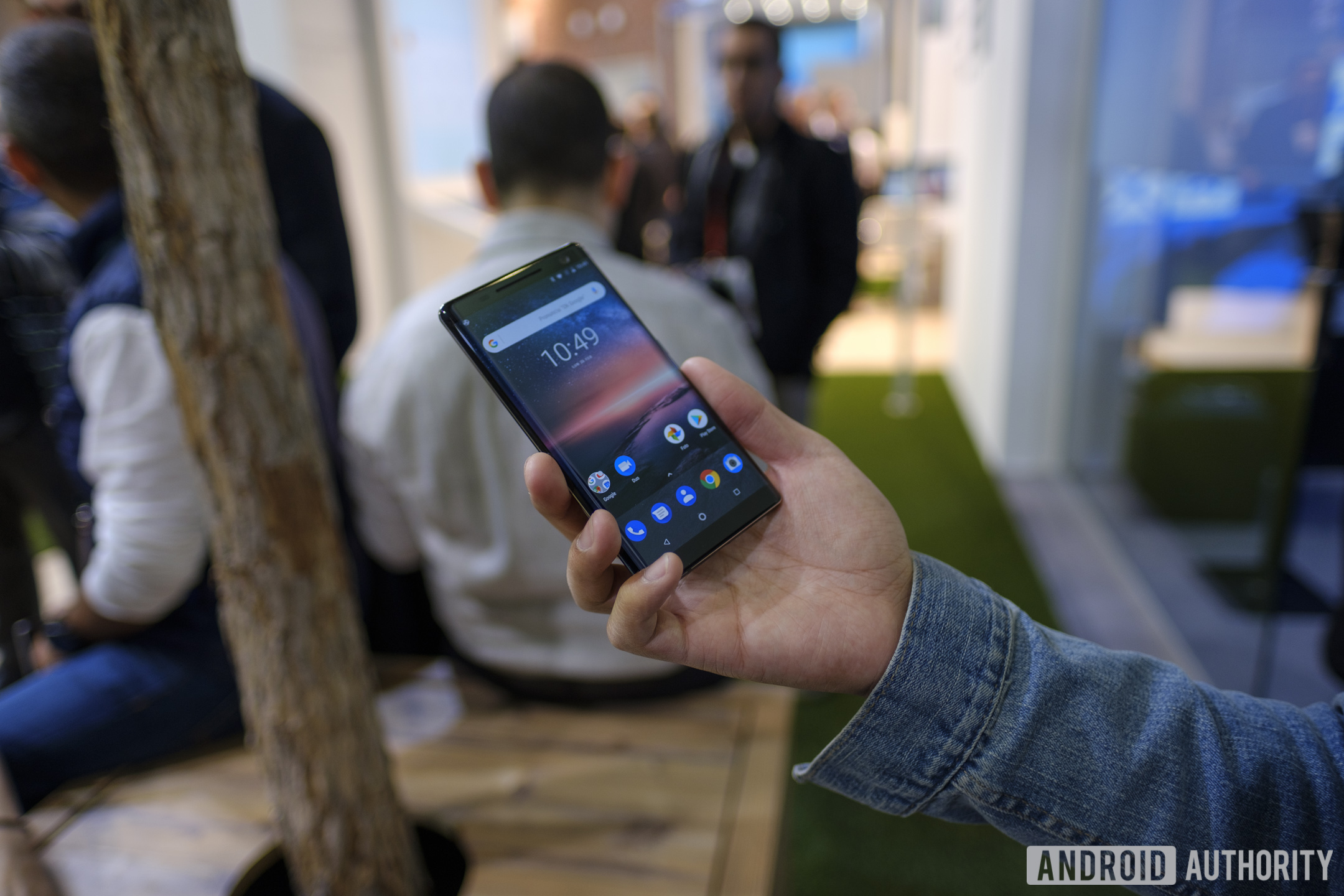Here are the best high-end smartphones that won’t break the bank
Between Xiaomi, OnePlus, Honor, and other brands, it seems like many manufacturers are confidently balancing features and price, delivering cheap flagships in the process. This is the most impressive year yet for these kinds of phones.
With that in mind, let’s take a look at some top-shelf phones that won’t cost the world.
Xiaomi Pocophone F1
Starting at $300, the Pocophone F1 might be the most impressive cheap flagship out there. The first phone from Xiaomi’s Pocophone (or Poco in India) sub-brand was a home run, offering features you’d expect from $700 or $800 phones.
The headline-grabbing addition is the Snapdragon 845 processor — the same chipset found in flagships from Samsung, HTC, LG, Sony and others. Add 6GB or 8GB of RAM, 64GB or 256GB of expandable storage, and a 4,000mAh battery, and you’ve got a fantastic deal.
The phone also packs a 12MP and 5MP rear camera pairing (no OIS here) and a 16MP front-camera setup. However, the camera experience isn’t really flagship level, as our Pocophone F1 review shows. The phone also lacks NFC connectivity, but at least it’s got a headphone jack.
Xiaomi has also taken a more lightweight approach to the user-interface, and an encouraging commitment to updates so far. The phone is scheduled to launch in several dozen countries, and its already on sale in India. Everyone else can check out the Amazon store listing below.
Xiaomi Mi 8
If you like the idea of the Pocophone F1, but need a Xiaomi phone with more features, the Mi 8 is for you. It offers the same Snapdragon 845, 6GB or 8GB of RAM, and 64GB to 256GB storage options as the F1, but makes upgrades everywhere else.
The phone packs a 6.21-inch full HD+ AMOLED screen (with a notch), dual-frequency GPS for more accurate navigation, NFC, a 12MP and 12MP telephoto camera setup, and a 20MP selfie camera. Prominent benchmarking website DxOMark gave the phone’s camera a score of 99 — one point ahead of the Pixel 2 and two ahead of the iPhone X and Huawei Mate 10 Pro.
There are a few missing features if you’re coming from a Samsung or LG device like wireless charging, a headphone jack, and water and dust resistance. Additionally, the 3,400mAh battery is a solid size, but it’s well short of the 4,000mAh Pocophone F1 and Galaxy Note 9. Still, for roughly $420, you get a cheap flagship phone anyway.
Asus Zenfone 5Z
For a starting price of $500, the Asus Zenfone 5Z is yet another smartphone offering flagship performance for hundreds of dollars below actual flagship prices.
The phone has a Snapdragon 845 processor, a notched 6.2-inch LCD screen (full HD+), 6GB of RAM, 64GB of expandable storage, and a 3,300mAh battery. It also offers a 12MP primary shooter with OIS, an 8MP super wide angle secondary snapper, a headphone jack, NFC, and support for Hi-Res Audio files.
The ZenUI skin is pretty handy, offering loads of AI-branded features. One of the standout features in this regard is AI Ringtone, which lowers or boosts a ringtones volume in reaction to your environment.
The phone seems like an iPhone X rip-off in the design department, but this is still undeniably one of the best cheap flagships out there.
OnePlus 6
The OnePlus series popularized the “affordable flagship,” and although the price has crept up over time, the latest model is still a cheap flagship compared to Samsung, Apple, and Huawei’s ultra-premium devices.
Retailing for $529, the OnePlus 6 offers what you’d expect from a top-end phone: a Snapdragon 845, 6GB or 8GB of RAM, and 64GB to 256GB of storage. The device also has a 6.28-inch full HD+ AMOLED screen (albeit with a notch), OnePlus’ trademark Dash Charge technology, and a 3,300mAh battery.
Rounding out the package is a 16MP and 20MP dual camera setup (with OIS on the primary sensor), a 16MP front-facing camera, NFC and, yes, a headphone jack. The phone also packs the lightweight HydrogenOS skin based on Android 8.1, although Android Pie is also available as a beta download.
There are a couple of omissions here though, such as a microSD slot, wireless charging, and water resistance, though the latter two features are still relatively uncommon in a $500 to $600 flagship. The camera performance also still isn’t as good as top-end phones from Samsung, Google, and Huawei, as we found in our OnePlus 6 review — at this price, you can’t live ’em all.
Honor Play
Honor’s take on the gaming smartphone hasn’t been as spectacular as the Asus ROG Phone, but it definitely takes the cake in affordability.
For 349 euros (~$407), you get a flagship-level Kirin 970 chipset with AI silicon, 4GB or 6GB of RAM, 64GB of expandable storage, a 6.3-inch notched full HD+ LCD screen, and a 3,750mAh battery. The Kirin 970 chipset isn’t quite as nimble as the Snapdragon 845, but it’s still high end, so it’ll handle gaming well.
Aside from the capable silicon, Huawei’s sub-brand implemented haptic feedback for games, and introduced GPU Turbo technology to boost performance. That’s pretty much it, but no matter how you look at it, you’re getting a powerful phone for $300.
The camera department isn’t as impressive as the core specs — 16MP and 2MP rear camera combination struggles in low light. The 16MP selfie shooter should do a solid, if unspectacular job in most conditions.
Honor 10
If you want the Honor Play’s horsepower but need better camera performance, the Honor 10 might be for you.
The Honor 10 sports a dual-camera setup on the back, with a 16MP f/1.8 primary shooter and a 24MP f/1.8 monochrome secondary snapper. Much like other recent Huawei and Honor flagships, it’s got AI-powered scene recognition and a wide aperture mode. We’ve also got a 24MP selfie camera, akin to the P20 series.
The camera department isn’t perfect, as the phone lacks OIS, which means more shudder and blur in low-light situations. In any case, our own Oliver Cragg was pretty impressed with the cameras in his Honor 10 review.
Completing the spec-sheet is a Kirin 970 SoC, 4GB or 6GB of RAM, 64GB to 128GB of (non-expandable) storage, a 3,400mAh battery, a headphone jack, and NFC. Not bad for 399 euros (~$466).
These are our favorite cheap flagships, covering everything from Asus and OnePlus to Honor and Xiaomi. This just shows that while traditional super-phones from Samsung, LG, Huawei, and others are great, you don’t need to spend a ton of money for a great experience.
Have we missed a few flagship killers? Let us know in the comments section.
from Android Authority https://ift.tt/2MSGRwl











Comments
Post a Comment